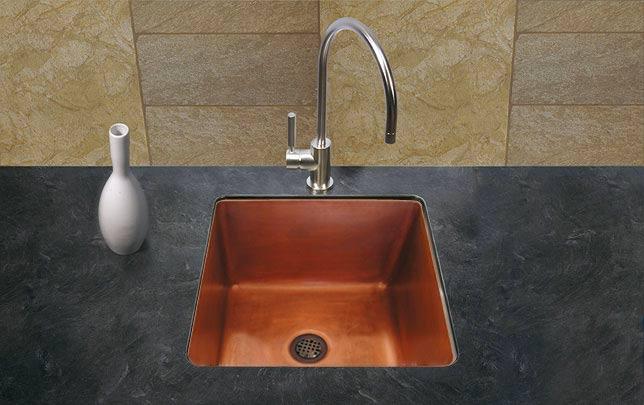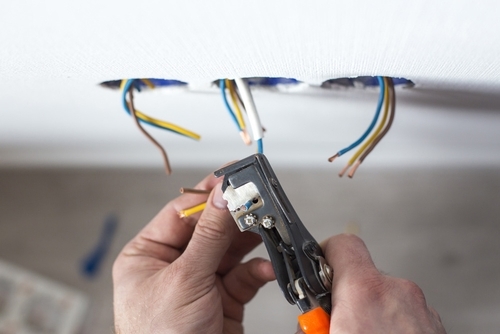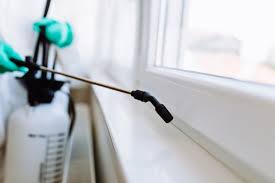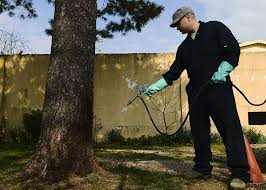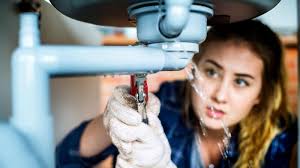How To: Make a DIY Wasp Trap
Save yourself and your family from stings this season by crafting this homemade wasp trap from your kitchen recyclables.
Nothing can ruin a summer barbecue or evening by the pool like the threat of a wasp’s sting. Mind you, wasps aren’t all bad—the adults are nectar-eating pollinators, and they kill other insects (often those harmful to crops) to feed their carnivorous larvae. Still, a nearby nest can be dangerous, especially to those who are allergic to their sting. Should you find an infestation around your own home, you have a few options: call a pest-control company, kill them yourself with sprays, or trap them. While wasp traps are available for purchase, save yourself some money and get rid of your buzzy problem by crafting this hands-off solution using items you most likely already have sitting in your house.
STEP 1: Cut up a 2-liter plastic bottle to create the trap.
Dig through your recycling to get the materials you need to make this trap, and get crafting. First, remove the bottle cap and cut the 2-liter soda bottle just under the neck, where the bottle becomes a straight cylinder. Invert the top portion of the bottle to serve as a funnel, and fit it inside the bottom half of the bottle. Tape the two pieces together around the cut edge so the funnel stays in place. Finally, poke two holes on opposite sides of the rim and attach some string to make a handle for hanging.
STEP 2: Prepare the bait for your trap.
You’ll never catch any wasps without the right kind of bait—and the perfect lure is wholly dependent on the season. In early spring, when wasps are reproducing, they are looking for protein; later in summer, they want sugar.
STEP 3: Position your trap off the ground.
You can set your traps out on the ground, but hanging them about four feet high will probably attract and catch more wasps. Find a good tree limb or fence post on your property—one that is at least 10 yards away from your family’s play, work, and gathering spaces—and hang up the homemade trap by its string handle
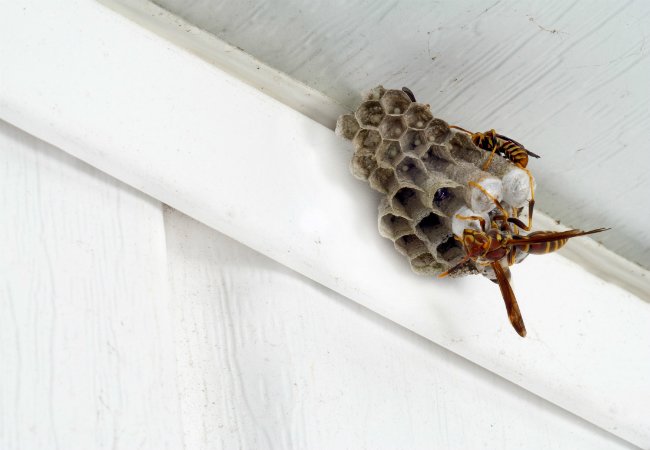
Things You Need to Know About ‘Murder Hornets’
If you haven’t been paying attention to the news over the past few weeks, you may not have heard about these huge hornets with massive stingers. The concern is legitimate, but just how worried about the hype should we really be? We’ve been getting a lot of questions about Murder Hornets
What is a Murder Hornet?
The name “murder hornet” was drummed up through social media to evoke fear and intrigue; the scientific name is vespa mandarinia, but it is more commonly known as the Asian Giant Hornet.
They can typically be found building subterranean nests by digging or by taking up residence in small burrows that rodents or other critters have already made. Nests will generally range anywhere from a few inches deep to approximately two feet down.
As it is primarily an insectivore, we believe the “murder hornet” name partially stems from how aggressive this hornet can be towards other bees, wasps and hornets. It only takes a small handful of these hornets roughly an hour to kill off a bee hive, slaughtering the entire hive in an effort to feed.
How big is a Murder Hornet, and what does it look like?
The Asian Giant Hornet is the biggest hornet on the planet, big enough that residents of Japan have referred to it as a “great sparrow bird.” Most are approximately two inches long, with a wing span of around three inches. The sheer size of this hornet makes its “buzz” so loud that you will often hear it coming before ever seeing it.

Telling apart the ‘murder hornet’ from hornets
“It appeared similar in size and markings,” said Terrill. “The discovery seemed uncanny. I had just read about the arrival of the Asian giant hornet in the Pacific Northwest the same day I found this giant hornet in my house.”
Terrill’s European hornet was unusually large because it was probably a queen, according to Scott Famous, local beekeeper and queen breeder, who examined the specimen. “She was probably looking for a place to start a new colony,” he said.
With the weather warming up and sightings of hornets sure to swell, I thought it would be useful to explore how the hornets common to the D.C. region differ from the Asian giant — or “murder” — hornet making news.
How can you tell the two apart? The Asian giant hornet, about 1½ to two inches long, is substantially larger than the European hornet, which tends to be a little over an inch long, as shown in the chart below. The Asian giant hornet has a head that is almost entirely yellow compared with the European hornet, which has a reddish-brown head that transitions to yellow around the face.
The Asian giant hornet is capable of destroying entire bee colonies and inflicting terrible stings with its quarter-inch stinger. The stinger is so powerful it can penetrate beekeeper suits. And the sensation of being stung is compared to a searing-hot thumbtack piercing the skin.

KEEPING WASPS AND HORNETS AWAY FROM THE HOUSE
Wasps and Hornets have created chaos for humans since the beginning of time. Despite being annoying and sometimes scary with their belligerent behavior and tendency to sting when provoked, wasps and hornets can also be very beneficial to have around. These flying insects are predators and feed on many other unwanted insects you can find in your backyard, offering free pest control. On the other hand, wasps and hornets can be dangerous as well. Unlike many varieties of bees, they can sting you repeatedly when angered; their painful stings can provoke allergic reactions — even venom anaphylaxis in some people — and can invade your personal space by building a nest in places like attics, eaves, and garages.
Sometimes, they can sneak in through your window and surprise you, buzzing around aggressively. These are unwanted guests you would never want in your home and often encourage panicking to find ways to get rid of them. In most towns and cities, you can call pest control services to deal with an infestation of hornets or wasps. These services are generally equipped to provide you with protection for a long time, months or whole season. On the flip side, these services can be quite expensive and not everyone can afford them. For those of you who prefer not to pay for an exterminator, here are a number of simple techniques that are inexpensive and can save your house from an infestation of wasps or hornets and you from being attacked by them.
Clove-Geranium-Lemongrass Oil Blend
What’s better in this world than using natural, organic blends to keep away hornets and other nasty flying insects? The excessive use of aerosols has its downfalls, most notably the ability to damage to our environment, and some pesticides are extremely dangerous as well. They not only have the ability to hurt people as well as plants, bees, and animals, so by using this natural blend you are not only fighting wasps and hornets but doing your bit to help conserve our environment.
Plain Old Soap + Water
Another eco-friendly way of keeping wasps and hornets away is by using soap and water in a spray bottle. This is one of the oldest methods to keep away such insects. Spraying a mixture of soap and water into their nests kills them instantly. This occurs because soap clogs the breathing pores of insects. As a result, it becomes very difficult for them to breathe and therefore, they eventually die. This is also a great mix for killing other nuisances such as boxelder bugs and some types of ticks.
Wasp repelling plants
Many people aren’t aware of this but some plants can actually repel pests. Plants such as citronella, thyme, and eucalyptus naturally deter insects like wasps and hornets. Growing these plants in your backyard will not only keep away these pests but also add beauty to your garden. It is a very effective as well as ongoing method of wasp control.

Selfless, Helpful and Intelligent: the Wasp; Yellow Jackets Much More Than the Evil Guests at the Picnic, Scientists Say
It is late summer, which means it is time to grit one’s teeth, get outside for a little family picnic, and practice that ever-fashionable dance routine, the Yellow Jacket Jive.
Yes, August is official yellow jacket month, as a number of entomologists have proclaimed on their Internet Web pages, and as anybody within range of a public trash can will attest. This is the season when the wretched little biblical plagues boil forth in force, bobbing and weaving like drunken marionettes, poking in fruit stands, crash-landing on soda cans, and haughtily, viciously, perniciously stinging any human who dares to protest
I’m better now. Sure, I’ve been stung a couple of times by yellow jackets, and, sure, both times I thought my leg had spontaneously combusted, but it turns out that yellow jackets are not the mean-spirited vermin their victims assume them to be. They are not nasty for nastiness’ sake. They are proactively defensive, family-values types that struggle selflessly to support and defend their kin. They may crave the same junk food we do, but they are not base freeloaders, and sometimes will even pitch in by hunting caterpillars, aphids, flies and other garden pests.
And to the entomologists who are beginning to piece together a portrait of their society, yellow jackets are fascinating insects, with all the sophistication of behavior found in bees, ants and other elaborately social insects.
Yellow jackets are not preprogrammed automatons, but learn from experience, including where and when to crash the best parties. They can communicate with one another, conveying their intentions, work assignments, the location of a hot new outdoor restaurant. Exactly how they communicate, though — whether through chemical signals, touch, sound or a kinetic language like bee dancing — is not understood.





